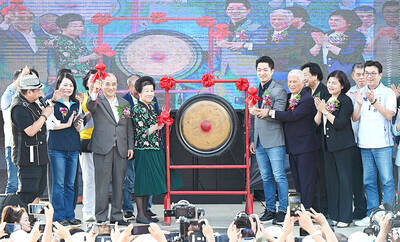“The thing you have to understand,” a senior official at the Indian Ministry of External Affairs said of China and India, “is that both of us think that the future belongs to us. We can’t both be right.” Nothing could be truer of the future struggle for power in Asia — except, perhaps, that in addition to India and China, Japan, which until recently had been the principal modernizer in the region, will also seek to regain its position of leadership.
In Rivals, Bill Emmott, a former reporter for the Economist in Japan and, until 2006, the editor in chief of the magazine, shows us that no other region will have as fundamental an impact, or play as crucial a role, on the international scene than Asia in the coming decades. From intensifying regional trade, economic development and their impact on the environment to spending on defense and nuclear nonproliferation, Asia — with China, Japan and India acting as pillars — is transforming at a stunning pace, and the variables involved in this complex relationship are such that predicting its future course is an impossible task, something Emmott himself admits.
Still, by looking at key regional aspects — economics, defense, domestic politics, the environment, and history as an active contemporary agent — Emmott sees certain trends emerging that could help us narrow down the possible futures to “plausible pessimism” and “credible optimism.”

What quickly becomes evident is that China is now the center of gravity in the region, both in terms of its economic might and as the shaper of politics. Emmott, as do a handful of other authors, maintains that the Chinese Communist Party (CCP) is here to stay and that it has the wherewithal to deal with the number of isolated challenges that may arise domestically. Aside from environmental degradation and its impact on human health, no other issue in China has the potential, he argues, to mobilize the population to the extent that it could threaten the regime; nationalism, such as in Tibet or Xinjiang, is too localized to spread throughout China, which thus makes it possible for the CCP to rely on force to put down disturbances. Its economy, meanwhile, has become solid and mature enough to withstand most shocks.
Japan, no so long ago the undisputed regional leader, has been supine since the 1990s, but Emmott sees signs that its government has launched reforms that, in the long term, could bring about its recovery. A certain sense of urgency, inspired by China’s rise, could also accelerate that process and encourage those within the Liberal Democratic Party (and in Washington) who seek to amend the country’s peaceful Constitution so that Japan could become a “normal” country once again and play the role it believes it should be playing in the region. In Emmott’s view, discarding Japan as a passe regional power would be a serious oversight, as would ignoring recent reporting that a majority of Japanese support their government taking a harder stance vis-a-vis China.
Last is India, the oft-forgotten emerging power whose role as a strategic counterweight on the balance-of-power chessboard could be the determining factor in the future course of the region. While India remains nowhere near as developed as China or Japan, it is nevertheless beginning to make its presence felt in some regional institutions, joint military exercises, and through the modernization of its forces. Furthermore, sensing its utility as a means to tie down China, the US and Japan have struck deals with India that could help buttress the modernization of the world’s largest democracy. In fact, Emmott opens his book by arguing that even if it meant blowing a hole in the Non-Proliferation Treaty, US President George W. Bush’s nuclear pact with Delhi in 2006 was a strategic tour de force, as it added a third leg to the regional balance and ensured that Delhi would side with the US and Japan should relations with China deteriorate. In response, Beijing has continually sought to exclude India from regional multilateral organizations. Shifting alliances notwithstanding, Emmott is optimistic that the regional powers and the smaller countries that gravitate around them see no advantage in compromising all the progress that has been made in the past decade by waging wars, an argument that pessimists would argue was also made when similar dynamics obtained in Europe at the turn of the 19th century — with two devastating world wars to follow. Why Emmott does not believe a repeat of the European fiasco is likely in Asia is partly the result of the somewhat benevolent, albeit not always welcome, presence of the US, which acts as a brake on those who would be inclined to use war as an instrument of foreign policy. However, how Beijing perceives that presence will have a direct impact on the future direction of China’s military; if the US, alone or through alliances, is seen to be seeking to contain it, conflict would be likelier, or China could actively pursue a closer alliance with Pakistan to counter India. Other tensions, which lurk close to the surface, could spark conflict. From the unresolved and poisonous issues of Japan’s responsibility in World War II to the flawed Tokyo Trials, post-Kim Jong-il North Korea to Islamic radicalism and nuclear weapons in Pakistan, instability in Myanmar, the Taiwan question, unresolved border disputes, Tibet after the Dalai Lama and disputed islands in the East China Sea, Emmott argues that the likeliest source of conflict — which could draw in other powers, such as the US — will be accidents and miscommunication, or, as he puts it, one side misjudging the cost of warfare in the modern world. Wars by proxy — a tool of the Cold War that remains relevant today — in places such as Myanmar, Tibet, North Korea and Pakistan — could also be launched as the three powers position themselves for the future. As demand grows, competition abroad over natural resources could also serve as a conflict accelerator between those three countries.
Emmott’s “new” Asia is a dynamic one, filled with potentialities, whose global impact will only become greater as its economies continue to grow. Through economic exchanges and the birth of regional alliances like the East Asian Summit, the ill-defined geographical Asia of old is quickly turning into a more tightly knit polity that, for better or worse, will have a greater say in global affairs and whose participation in international bodies such as the UN Security Council and the G8 will be paramount if those organizations are to remain relevant.

The 1990s were a turbulent time for the Chinese Nationalist Party’s (KMT) patronage factions. For a look at how they formed, check out the March 2 “Deep Dives.” In the boom years of the 1980s and 1990s the factions amassed fortunes from corruption, access to the levers of local government and prime access to property. They also moved into industries like construction and the gravel business, devastating river ecosystems while the governments they controlled looked the other way. By this period, the factions had largely carved out geographical feifdoms in the local jurisdictions the national KMT restrained them to. For example,

April 14 to April 20 In March 1947, Sising Katadrepan urged the government to drop the “high mountain people” (高山族) designation for Indigenous Taiwanese and refer to them as “Taiwan people” (台灣族). He considered the term derogatory, arguing that it made them sound like animals. The Taiwan Provincial Government agreed to stop using the term, stating that Indigenous Taiwanese suffered all sorts of discrimination and oppression under the Japanese and were forced to live in the mountains as outsiders to society. Now, under the new regime, they would be seen as equals, thus they should be henceforth

With over 100 works on display, this is Louise Bourgeois’ first solo show in Taiwan. Visitors are invited to traverse her world of love and hate, vengeance and acceptance, trauma and reconciliation. Dominating the entrance, the nine-foot-tall Crouching Spider (2003) greets visitors. The creature looms behind the glass facade, symbolic protector and gatekeeper to the intimate journey ahead. Bourgeois, best known for her giant spider sculptures, is one of the most influential artist of the twentieth century. Blending vulnerability and defiance through themes of sexuality, trauma and identity, her work reshaped the landscape of contemporary art with fearless honesty. “People are influenced by

The remains of this Japanese-era trail designed to protect the camphor industry make for a scenic day-hike, a fascinating overnight hike or a challenging multi-day adventure Maolin District (茂林) in Kaohsiung is well known for beautiful roadside scenery, waterfalls, the annual butterfly migration and indigenous culture. A lesser known but worthwhile destination here lies along the very top of the valley: the Liugui Security Path (六龜警備道). This relic of the Japanese era once isolated the Maolin valley from the outside world but now serves to draw tourists in. The path originally ran for about 50km, but not all of this trail is still easily walkable. The nicest section for a simple day hike is the heavily trafficked southern section above Maolin and Wanshan (萬山) villages. Remains of